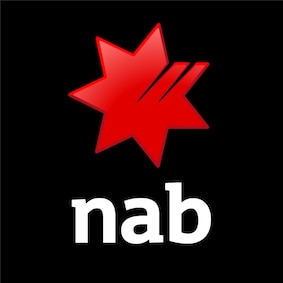Seven steps to start a new retail business - NAB
Setting up for success
In a highly competitive industry, retailers need to remain up-to-date. A retail business won’t thrive unless key areas are met. From making sure you have the right products to a great social media presence, this checklist has it covered.
1. Check you are offering the right products
Whether your retail business focuses on one primary product group, or sells a variety of products make sure what you’re selling is relevant for your market. Here are some ways to do this:
- Use your product sales data to review your range and determine which products are most popular. Can you add a wider range to your inventory? Do you need to retire stock with falling sales?
- Generate feedback through surveys, and talk to your customers when they’re making purchases. Find out if there’s anything you’re not offering that they’d like to see. Make the most of your social media platforms to survey your customers about your products.
- Can you develop a premium product? This is something you’re already selling, but with new features, that provides added value to the customer that’s greater than the cost to you.
- Review suppliers. Attend trade shows (in Australia and overseas) to identify new suppliers who can offer new products. Explore importing products direct, or build relationships with wholesalers to identify new products you could offer.
- Stay on top of your competitors. Watch your competition to make sure they haven’t launched new products, or found exclusive new suppliers which you can’t match. If they seem to be generating more sales than you, determine why. What are they doing and how can you address this? Complete a competitor analysis to understand what they are doing well and what you could do to offset these actions.
Top tip: Make the most of social media
Social media has progressed quickly, and that’s because platforms like Facebook, Pinterest and Instagram are effective and popular. Some of the top brands in Australia use social media as an integral part of their digital strategy. Marketing Eye has a report on the top 10 retail brands in Australia that lead on social media performance.
2. Check your business model
Sell where there’s a market
Retailers are increasingly selling their products online to widen their distribution channel and to have a presence where there’s a market. Even if you can’t match overseas online prices, target those customers that will pay a premium to buy through an Australian based business.
If you do sell online, invest in a responsive website, a great end to end user experience and have a planned online campaign to generate awareness. NAB’s eCommerce Merchant Account is a good option for businesses that sell online.
Always keep an eye out for new markets
On a local level, if your store is doing well in your current location, research the market in a different region. Document what makes your location work, then target similar areas with similar customers. Is there an obvious opportunity to open new stores?
You might also consider entering the export market and selling your product overseas if you’re able to source locally made Australian products. NAB’s International and Foreign Exchange option offers assistance in foreign exchange and trade finance.
Top tip: Do your research
With the current shift from bricks-and-mortar to online stores, IBISWorld’s report about online shopping in Australia provides key industry analysis and statistics. It also offers insights on market size, industry trends and market share. It shows how online retailing has changed the face of Australian retail, with a dramatic growth over the past five years. As a retailer, these are facts you shouldn’t ignore.
3. Check your marketing
Know your current strategy – what is it and is it working?
Successful retailers continually review their marketing strategy. Keep up with how people are making purchase decisions, their sensitivity to pricing, and how they find out about you. You can do this through digital marketing, social media or direct marketing. It’s increasingly important to have a great digital presence, such as a responsive website to inform and educate customers about what you do. A digital presence can help raise the awareness of your business. You should consider Google Adwords marketing, an up-to-date Facebook page for your business or using Facebook call back request forms to generate leads.
Check out your competition
If they’re successful, what are they doing and what can you learn from them? The retail business is highly competitive. If you see your competition doing something that’s effective and successful, try to implement it yourself. But it’s important to see if you can improve on it to enhance your competitive edge.
Learn all you can about your customers
Advertising works when you know which customers you’re targeting, rather than a scattergun approach. Determine your ideal customer and what their needs are, then make sure what you offer is designed to address their need.
Review seasonal trends
Can seasonal issues affect your business, like school terms and holidays? Coordinate your promotion and product purchases with events that are planned during the year. Develop a calendar that captures any excuse to get in front of customers, from sports events, local celebrations, to public holidays.
Work with local retailers to get more people to your area
Just because you have competitors doesn’t mean you can’t work with them to attract more people to your location. Or you can work with another business to gain more customers together.
Collect feedback and make changes with what you learn
Either from social media or from your customers, if you get great feedback, use the comments as testimonials on your website. If you’re seeing complaints, use them to turn a negative customer experience into a positive one. And make sure you have processes, and a person, in place to handle feedback early and effectively.
4. Check your systems
Ensure your ordering system is efficient
If you’re purchasing a range of different products for your inventory, it’s important your system is effective and efficient. It’s also important that it’s easily understood by your employees so you can manage your cash flow and stock levels.
Check inventory for defects and quality
Always document the inventory you receive, and check for defects or incorrect delivery. If you are constantly returning product, then it’s time to search for new suppliers.
Use inventory software
Even small retail businesses should automate between the till and what’s being sold, and your inventory levels and what you have left in stock. It will allow you to use ‘just in time’ ordering to keep your inventory to a minimum without running out.
Offer your customers ways to pay
Customers want the latest ways to pay, with the most up-to-date technology. Online and mobile payments mean that you aren’t spending time invoicing, and chasing up late payers. NAB’s Business Package has options for you to do this and includes options such as:
- NAB EFTPOS - solutions for on-the-go and in-store payments. It’s the most common way to pay in a physical store, and if you deliver products to your customers’ homes, there’s also on-the-go options as well.
- If you have customers that have credit accounts, NAB Direct Debit allows you to debit funds straight from your customers’ accounts. This reduces the amount of time you spend chasing up late payments.
- Plus, if you pay your bills promptly, you’re going to develop a better relationship with your suppliers. Automating your payments and setting up direct debits with Business Credit Cards means you’re reducing the stress, hassle, and administrative burden.
- Download NAB Easy Tap to your Android device for a low-cost, simple way to take contactless card payments without the need for a terminal.
Use accounting software to keep everything up to date and compliant
A good accounting system is crucial for a retail business and comes in handy at tax time. You can monitor cash flow, transactions and inventory, develop a customer database, and keep up to date with your bills and payroll. A cloud-based accounting system offers increased security, as well to the ability to check your financial data in real time. Most can be used on your smartphone as well, making it easier to update your records. Once you have accounting software you can integrate your accounting package with your NAB account to make bank reconciliation fast and easy. There’s also a number of retail specific software add on products that integrate with your accounting software.
Develop a customer sales system
Provide training to employees to keep up-to-date with the products you’re selling, and to offer an outstanding customer experience. One of the main differentiators for a retailer is customer service, in a world where the customer can buy most products online. Create a system to go that extra step, know your customers by name, be involved in the local community and anticipate customer needs.
Check you’re not overstocked
If you find yourself with products that aren’t selling, and running out of those that are, you need a better inventory system. Invest in inventory management software to see on a daily basis what is happening.
Top tip: The importance of retail workflow and operational processes
Understanding best practice when it comes to the workflow of retail operational processes is essential. The Small Business Chronicle has some tips on the basics, such as purchasing, inventory, customer service and accounting.
5. Check your capacity
Are you getting more sales than you can handle?
If your business has queues outside the door, and you can’t keep up, you need to find a solution. Larger premises, more staff, longer opening hours, more cash registers, or mobile payments to prevent queuing are all options. Regularly check with staff about the amount of work they have, to prevent errors within the business or providing a less than ideal customer experience.
Recalculate your break-even point
If you find you’re flat out but not making profit, it’s time to review your break-even point. One way of addressing this is by lowering your overheads, raising your prices, and focusing on selling higher margin products. You’ll find you need to sell less to make the same money.
Top tip: Address your cash flow
Increasing your cash flow to grow your business can be as easy as using NAB's Business Overdraft option. It links to your NAB Business Everyday Account, and has no set repayment schedule, so you can pay when it suits your cash flow. You could also consider a NAB Business Loan, or if it's only a short-term cash injection that you need, a NAB QuickBiz Loan.
6. Check your KPIs
Compare your actual sales against your sales forecasts
This is to make sure that your forecasts are on track, so that you can use them to continue to predict sales and make decisions based on them. If your sales forecasts are inaccurate, it’s time to review how you predict sales and costs so they’re more realistic.
Check your costs aren’t exceeding your budgets
Keep an eye on things like fixed costs, to make sure they’re not going over budget. Review your overheads – rent, power, internet, etc. – and if they’re more than you expect, look at ways to reduce them. For instance, if your store is in a shopping mall, chances are you’re paying prime commercial rent. Do your sales justify it or would you be better in a cheaper location?
Make sure you’re matching or exceeding your industry gross margins
Every retail industry has ‘accepted’ mark-ups for products. If you’re not achieving industry norms, look at ways you can increase your margins. Increasing price, targeting less price sensitive customers, widening your product range to cover better margin product will all help.
Review your sales data, and take action using these indicators
- High percentage of sales and high profit margins – look after these customers, keep in contact and they are priority one.
- High percentage of sales but low profit margins – consider a price increase to raise your profit margin, and make sure these customers are easy to deal with and don’t take you away from your priority one customers.
- Low percentage of sales but high profit margins – focus your marketing and selling campaign to gain more customers like these.
- Low percentage of sales and low profit margins – these customers can be the least attractive and if they are taking you away from better prospects, try and reduce these where possible.
Top tip: Top 10 KPIs in retail
There are lots of KPIs that can affect retail businesses. Some stand out more than others in terms of the competitive advantage they provide, as well as helping to monitor sales success and performance. Gain Insights has a guide to the Top 10 KPIs in retail.
7. Stay up-to-date
Be social media savvy
Successful retailers are finding more ways to be in contact and connect with customers. Keep in contact with your customers - from updating what the business is doing on Facebook, to blogging on popular retail topics, to posting photos of new product releases on Instagram.
Build a personalised experience
By using your sales data and customer contact information, build a one to one personal relationship with your customer. It’s not only good business for you, but customers appreciate you understanding and anticipating their needs.
Use customer sales software
Build a profile of your customers, enrol them to receive your e-newsletter, develop a customer loyalty scheme, or start rewarding them based on their purchases. Make buying from you a rewarding experience.
Be aware of customer trends
Research what’s happening to the demographics of your customers; are they part of the baby boom market (born 1946-1964) who are all approaching retirement? Or are they younger teens? Or parents with children under ten? Each will require you to be aware of what they want, how they want it, and how they want you to sell to them.
New
Women in Business
We’re dedicated to helping female business owners succeed with expert guidance, actionable insights and direct access to experienced business bankers. Whether you’re launching your business or ready to expand, we’re here to support your growth every step of the way.

Checklist for starting a new retail business
Thinking about starting a business? We have tips, tools and solutions to back you. Request a call back or call us on 13 10 12.
Other business moments
How to use our start-up costs calculator
Will the costs of starting your business outweigh the returns?
Checklist for the first steps in starting a business
Tips, links and calculators to cover the basics.
How to increase the market value of your business
We explore steps to grow the market value of your business.
Related products and services
Wholesale, retail and trading businesses
Tailored banking solutions for wholesale, retail, import and export businesses.
Billing and recurring payments
Make it easy for your customers to pay their bills with our range of billing solutions.
NAB QuickBiz unsecured business loan
Fast, unsecured business lending made easy. Get access to funds for your business without physical assets as security.
Get in touch
Contact us
Explore our business banking contact information and get support with a wide range of products, services and topics.
Visit a NAB branch
Our business bankers are located all around Australia.
Important information
Apologies but the Important Information section you are trying to view is not displaying properly at the moment. Please refresh the page or try again later.
The information contained in these articles are correct as of March 2025 and are intended to be of a general nature only. It has been prepared without taking into account any person’s objectives, financial situation or needs. Before acting on this information, NAB recommends that you consider whether it is appropriate for your circumstances. NAB recommends that you seek independent legal, financial, and taxation advice before acting on any information in these articles.





